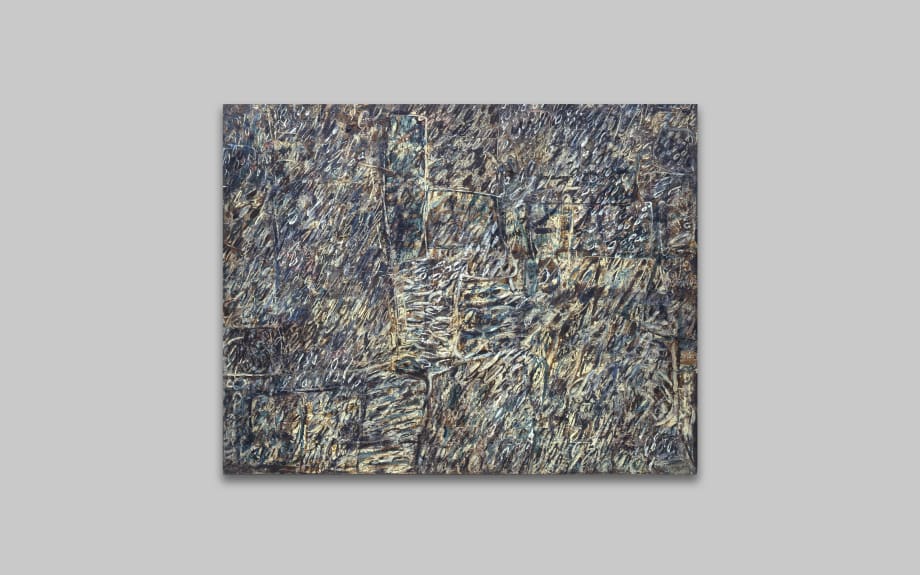Nato a Bèziers nel 1924, Georges Noël crebbe a Pau. La sua famiglia possedeva un modesto negozio di vernici e ferramenta e suo padre partecipò alla restaurazione di diverse case e chiese della regione in qualità di specialista nelle tecniche di affresco, marmorino e pittura effetto legno. Durante l’occupazione tedesca fu attivo al fianco di suo padre nel movimento di resistenza maquis, partecipò a diverse missioni e condusse in Spagna attraversando i Pirenei dei paracadutisti Britannici. Georges affermava che il suo senso di urgenza – nella sua vita e nella sua arte- scaturì dalle esperienze di quegli anni. Alla fine del conflitto fu assunto dall’importante azienda aereonautica Turbomeca, a Pau, dove lavorò come designer e progettista per quasi dieci anni. Fu nel 1956 all’età di 32 anni che abbandonò tutto e si trasferì con sua moglie e le sue due figlie a Parigi per diventare un pittore a tempo pieno.
Nel 1960 Georges Noël inventò il suo vero medium personale – un mix di colla, sabbia e pigmenti in polvere. Invece di unire carta e tela (tecnica che a volte utilizzerà ancora), stendeva questo composto a mo’ di pasta e quando era parzialmente asciugato lo incideva con uno strumento affilato con gesti decisi e veloci.
